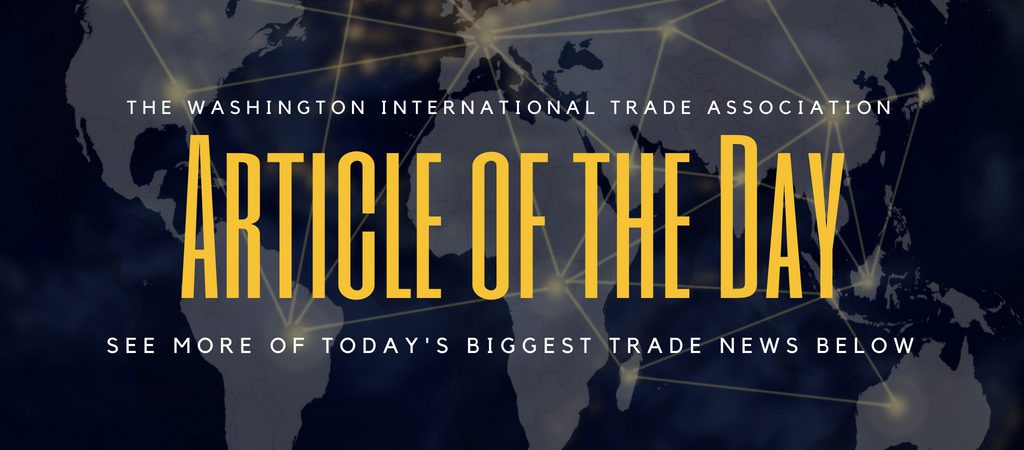What Does Trade Have to Do with the Pandemic?
A pandemic is a type of epidemic, wherein an outbreak of a disease not only affects a high proportion of the population at the same time, but also spreads quickly over a wide geographic area.
As the novel coronavirus jumped continents, governments in countries yet unaffected or with low incidence rates moved to prevent “importing” the virus through individual travel. Simultaneously, governments acted to create diagnostic kits and treatments for those with the virus – all praise our frontline healthcare workers.
Unfortunately, what could worsen the situation is a policy practice that seems to be infectious. More than 20 governments are banning the export of needed supplies, a prescription for shortages and higher prices. What the crisis also lays bare is that key countries and many important healthcare products remain outside a WTO agreement that would otherwise enable duty-free trade in the medicines and supplies we need on a regular basis.
Pandemic Proportions
In the history of pandemics, there has been none more deadly than the infamous Bubonic Plague which took 200 million lives in the mid-14th century, wiping out half the population on the European Continent. The pathogen spread through infected fleas carried by rodents, frequent travelers on trading ships.
The practice of quarantine began in the seaport of Venice, which required any ships arriving from infected ports to sit at anchor for 40 days — quaranta giorni — before landing. Two centuries later, Small Pox took 56 million lives. In the modern era, some 40 to 50 million succumbed to the Spanish Flu of 1918 and HIV/AIDS has claimed 25-35 million lives since 1981.
For perspective, and not to minimize its severe toll, the number of fatalities from novel coronavirus will likely exceed 10,000 by the time of this writing. COVID-19, as it is currently known, is a reminder that we live with the ongoing threat from many types of both known infectious diseases like cholera, Zika and Avian flu, as well as diseases yet unknown to us.
Although we can more rapidly detect, contain and treat epidemics, diseases now travel at the speed of a person on board an international flight. Our cities are bigger and denser, further enabling rapid transmission.
Pandemic Prepping Includes Trade
Because we are interconnected, we share the health risks, but we can also problem-solve as a global community. Scientists in international labs share insights to identify viruses, swap guidance on how to conduct confirmatory tests, and quickly communicate best practices for containment.
Outside times of crisis, global trade in health-related products and services has laid the foundation for faster medical breakthroughs through international research and development projects, and by diversifying the capability to produce medical supplies, devices, diagnostics and pharmaceuticals.
Innovation thrives in the United States like nowhere else. Yet, no single country, not even the United States, can discover, produce and distribute diagnostics, vaccines and cures for everything that ails us — or invent every medical intervention that improves the productivity and quality of our lives.
A Dose of Foresight
As the Uruguay Round of multilateral trade negotiations were drawing to a close in 1994, a group of countries representing (at the time) 90 percent of total pharmaceutical production came to an agreement. Each government would eliminate customs duties on pharmaceutical products and avoid trade-restrictive or trade-distorting measures that would otherwise frustrate the objective of duty-free trade in medicines.
The WTO’s Pharmaceutical Tariff Elimination Agreement, which entered into force on January 1, 1995, is known as a “zero-for-zero initiative” to eliminate duties reciprocally in a particular industrial sector. Signed onto over subsequent years by the United States, Europe’s 28 member states, Japan, Canada, Norway, Switzerland, Australia and handful of others, the agreement initially covered approximately 7,000 items that included formulated or dosed medicines, medicines traded in bulk, active pharmaceutical ingredients (APIs) and other chemical intermediaries in finished pharmaceuticals.
Signatories agreed to expand the list in 1996, 1998, 2006 and 2010 so it now covers more than 10,000 products. Tariffs were eliminated on a most-favored-nation basis, meaning it was extended to imports from all WTO members, not just parties to the agreement.
To see the full article, click here.

